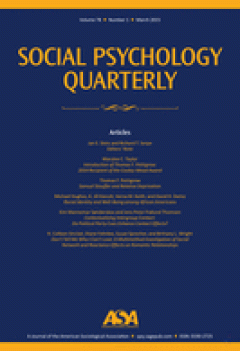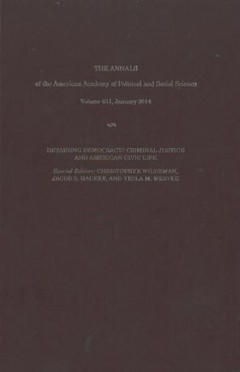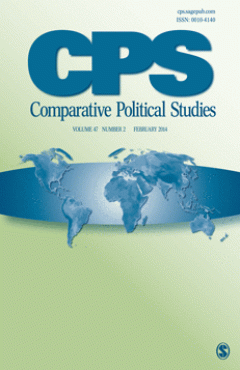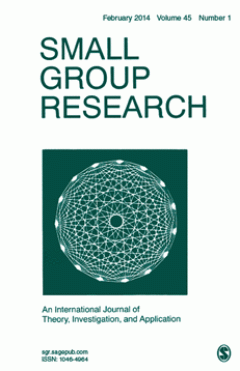Filter by

World Development, Volume 88, December 2016
- Edition
- -
- ISBN/ISSN
- 0305750X
- Collation
- -
- Series Title
- -
- Call Number
- -
- Edition
- -
- ISBN/ISSN
- 0305750X
- Collation
- -
- Series Title
- -
- Call Number
- -

World Development, Volume 89, January 2017
- Edition
- -
- ISBN/ISSN
- 0305750X
- Collation
- -
- Series Title
- -
- Call Number
- -
- Edition
- -
- ISBN/ISSN
- 0305750X
- Collation
- -
- Series Title
- -
- Call Number
- -

The Measure of woman: law and female identity in the crown of aragon
- Edition
- -
- ISBN/ISSN
- 9780812242560
- Collation
- 217p.; 24 cm
- Series Title
- -
- Call Number
- 305.4 KEL m
- Edition
- -
- ISBN/ISSN
- 9780812242560
- Collation
- 217p.; 24 cm
- Series Title
- -
- Call Number
- 305.4 KEL m

Bess Wallace Truman: Harry's White House "Boss"
- Edition
- -
- ISBN/ISSN
- 978-0-7006-1741-8
- Collation
- xi, 166p.; 24 cm
- Series Title
- -
- Call Number
- 920 TRU b
- Edition
- -
- ISBN/ISSN
- 978-0-7006-1741-8
- Collation
- xi, 166p.; 24 cm
- Series Title
- -
- Call Number
- 920 TRU b

A Country Is Not a Company
Nobel-Prize-winning economist Paul Krugman argues that business leaders need to understand the differences between economic policy on the national and international scale and business strategy on the organizational scale. Economists deal with the closed system of a national economy, whereas executives live in the open-system world of business. Moreover, economists know that an economy must be r…
- Edition
- -
- ISBN/ISSN
- 978-1-4221-3340-8
- Collation
- v, 55p.; 16,5 cm
- Series Title
- -
- Call Number
- 336.4 KRU a

They Say/I Say: The Moves that Matter in Academic Writing : with Readings
"The book that demystifies academic writing, teaching students to frame their arguments in the larger context of what else has been said about their topic--and providing templates to help them make the key rhetorical moves. The best-selling new composition book published in this century, in use at more than 1,000 schools, They Say / I Say has essentially defined academic writing, identifying it…
- Edition
- -
- ISBN/ISSN
- 978-0-393-91275-3
- Collation
- 507p.; 19 cm
- Series Title
- -
- Call Number
- 808.02 GRA t

Economics of the Public Sector
It has been a decadesince the last revision of this textbook and much has happened in the intervening ten years. I have been lucky enough to have been an active participant in many of these changes, as member and chairman of the President�s Council of Economic Advisers. This edition is written from the unique perpective of a public sector economist who had the chance to be involved in the decis…
- Edition
- -
- ISBN/ISSN
- 0-393-96651-8
- Collation
- xxiii, 823p.; 24 cm
- Series Title
- -
- Call Number
- 336.4 STI e

Administrative Science Quarterly, Volume 61, Number 2, June 2016
- Edition
- -
- ISBN/ISSN
- 00018392
- Collation
- -
- Series Title
- -
- Call Number
- -
- Edition
- -
- ISBN/ISSN
- 00018392
- Collation
- -
- Series Title
- -
- Call Number
- -

Administrative Science Quarterly, Volume 61, Number 1, March 2016
- Edition
- -
- ISBN/ISSN
- 00018392
- Collation
- -
- Series Title
- -
- Call Number
- -
- Edition
- -
- ISBN/ISSN
- 00018392
- Collation
- -
- Series Title
- -
- Call Number
- -

Social Psychology Quarterly, Volume 79, Number 2, June 2016
- Edition
- -
- ISBN/ISSN
- 01902725
- Collation
- -
- Series Title
- -
- Call Number
- -
- Edition
- -
- ISBN/ISSN
- 01902725
- Collation
- -
- Series Title
- -
- Call Number
- -

Managing Creativity and Innovation
This is one of the volumes in the new Harvard Business Essentials Series. Each offers authoritative answers to the most important questions concerning its specific subject. The material in this book is drawn from a variety of sources which include the Harvard Business School Press and the Harvard Business Review as well as Harvard ManageMentor�, an online service. Each volume is indeed "a highl…
- Edition
- -
- ISBN/ISSN
- 9781591391128
- Collation
- xv, 173p.; 24 cm
- Series Title
- -
- Call Number
- 658.514 HAR m

World Politics: Interests, Interactions, Institutions
A contemporary analytical approach to international relations written at a level that introductory students can grasp. Why are there wars? Why do countries have a hard time cooperating to prevent genocides or global environmental problems? Why are some countries rich while others are poor? Organized around the puzzles that draw scholars and students alike to the study of world politics, this bo…
- Edition
- -
- ISBN/ISSN
- 9780393912388
- Collation
- xxxii, 579p.; 23 cm
- Series Title
- -
- Call Number
- 327 FRI w

Qualitative Research: A Guide to Design and Implementation
"In this new edition, Sharan Merriam once again presents the world of qualitative research in language engaging and accessible?for new and experienced readers alike. If you can have only one book about qualitative research, this is it!" ?Patricia M. Reeves, associate professor, School of Social Work, University of Georgia "Mystified by qualitative research? You couldn't ask for a better guid…
- Edition
- -
- ISBN/ISSN
- 9780470283547
- Collation
- xvi, 304p.; 23 cm
- Series Title
- -
- Call Number
- 300.72 MER q

Conscious Capitalism: Liberating the Heroic Spirit of Business
"We believe that business is good because it creates value, it is ethical because it is based on voluntary exchange, it is noble because it can elevate our existence, and it is heroic because it lifts people out of poverty and creates prosperity. Free-enterprise capitalism is the most powerful system for social cooperation and human progress ever conceived. It is one of the most compelling idea…
- Edition
- -
- ISBN/ISSN
- 9781625271754
- Collation
- xviii, 344p.; 21 cm
- Series Title
- -
- Call Number
- 658.408 MAC c

The ANNALS of the American Academy of Political and Social Science, Volume 66…
- Edition
- -
- ISBN/ISSN
- 00027162
- Collation
- -
- Series Title
- -
- Call Number
- -
- Edition
- -
- ISBN/ISSN
- 00027162
- Collation
- -
- Series Title
- -
- Call Number
- -

The ANNALS of the American Academy of Political and Social Science, Volume 66…
- Edition
- -
- ISBN/ISSN
- 00027162
- Collation
- -
- Series Title
- -
- Call Number
- -
- Edition
- -
- ISBN/ISSN
- 00027162
- Collation
- -
- Series Title
- -
- Call Number
- -

The ANNALS of the American Academy of Political and Social Science, Volume 66…
- Edition
- -
- ISBN/ISSN
- 00027162
- Collation
- -
- Series Title
- -
- Call Number
- -
- Edition
- -
- ISBN/ISSN
- 00027162
- Collation
- -
- Series Title
- -
- Call Number
- -

Comparative Political Studies, Volume 49, Number 7, June 2016
- Edition
- -
- ISBN/ISSN
- 0010-4140
- Collation
- -
- Series Title
- -
- Call Number
- -
- Edition
- -
- ISBN/ISSN
- 0010-4140
- Collation
- -
- Series Title
- -
- Call Number
- -

Comparative Political Studies, Volume 49, Number 6, May 2016
- Edition
- -
- ISBN/ISSN
- 0010-4140
- Collation
- -
- Series Title
- -
- Call Number
- -
- Edition
- -
- ISBN/ISSN
- 0010-4140
- Collation
- -
- Series Title
- -
- Call Number
- -

Small Group Research, Volume 47, Number 3, June 2016
- Edition
- -
- ISBN/ISSN
- 1046-4964
- Collation
- -
- Series Title
- -
- Call Number
- -
- Edition
- -
- ISBN/ISSN
- 1046-4964
- Collation
- -
- Series Title
- -
- Call Number
- -
 Computer Science, Information & General Works
Computer Science, Information & General Works  Philosophy & Psychology
Philosophy & Psychology  Religion
Religion  Social Sciences
Social Sciences  Language
Language  Pure Science
Pure Science  Applied Sciences
Applied Sciences  Art & Recreation
Art & Recreation  Literature
Literature  History & Geography
History & Geography